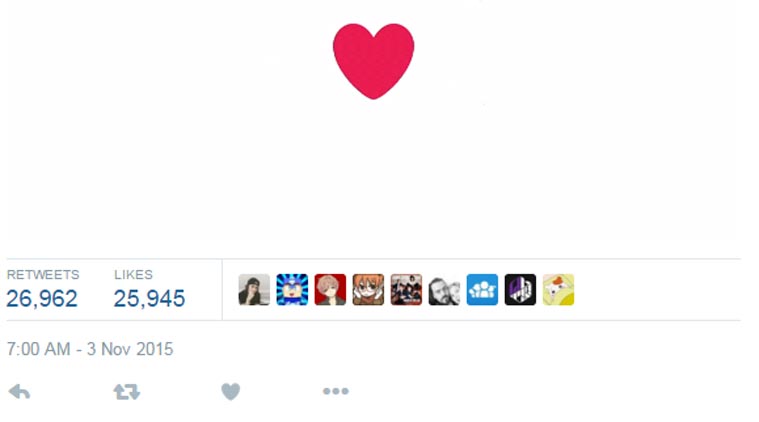Twitter’s new hearts might not improve its health
Twitter is ditching ‘favourites’ for ‘likes’ in the form of hearts. But Twitter's 'hearts' might not be enough to stem the kind of harassment that continues on the site.
 Twitter Hearts is a new way of interacting on the site, which replaces the stars for favourites.
Twitter Hearts is a new way of interacting on the site, which replaces the stars for favourites.
Twitter hearts are the new product change under co-founder and permanent CEO Jack Dorsey, who returned to the company last month. But why hearts in place of the favourites? One of the reasons is to reverse the poor user engagement and slow user growth that the site has seen in last one year.
References to Facebook’s Likes and Instagram’s heart aside, this need to drive up engagement is crucial to the company’s fortunes. Twitter’s Q2 results for 2015 saw its monthy active users (MAUs) at only 304 million, up marginally from the 302 million MAUs in the earlier quarter. In sharp contrast, Facebook owned Instagram has already crossed 400 million (MAUs) in September.
When the Q2 results were announced, Jack Dorsey, who was then the interim CEO, had said, “We are not satisfied with our growth in audience…In order to realise Twitter’s full potential, we must improve in three key areas: ensure more disciplined execution, simplify our service to deliver Twitter’s value faster, and better communicate that value.”
The hearts, it would appear, are one step in this simplification process. It is also Twitter’s attempt to introduce a more common form of engagement that is used across the web.
But for Twitter, hearts will not solve all of its problems, especially the one of abuse. And Twitter itself has done barely anything to curb the troll-behaviour that has continued rampantly on the site. Even former CEO Dick Costolo admitted in an internal memo that the company had failed on this front, noting that they “suck at dealing with abuse and trolls on the platform and we’ve sucked at it for years.”
He noted that it had cost Twitter “core user after core user” for “not addressing simple trolling issues that they face every day.” Costolo’s point about losing core users is the one that can’t be missed.
[related-post]
The problem lies in Twitter’s apparent contradiction as a platform. Twitter is about engaging publicly, about being opinionated, about being snarky, pointing out what you might think is utterly wrong.
Yet being opinionated on Twitter can often land one into trouble. Tweets about anything can start a chain of abuse, be it a tweet questioning #SelfiewithDaughters or one about beef or politics. In India, a politically sensitive tweet or even an innocuous one linking to an article which might not find favour with someone else, is a potential tinderbox. And blocking people isn’t enough.
To add to its woes, private messaging on Twitter has not really taken off. Until recently DMs were limited to 140 characters, although now users can send up to 10,000 characters in messages.
Direct Messages are a potential engagement booster for any social media brand. Just look at how Facebook’s Messenger has crossed over 1 billion app downloads. But on Twitter, since most interactions are public, not everyone is so keen on getting DMs from strangers, who they may or may not follow. If you get trolled fairly often on Twitter, it’s unlikely you’ve kept your DM settings to “Allow messages from anyone.”
Twitter is right when it says the heart is the “universal symbol that resonates across languages, cultures, and time zones.” It’s also a more positive symbol, which as Twitter’s own post notes can be used to say things like ‘I like this’ or ‘Hugs’ or ‘Adorable.’
And while getting a number of hearts on a tweet might look cute and adorable, unless Twitter can ensure a fix for the daily abuse, its engagement troubles will continue.







